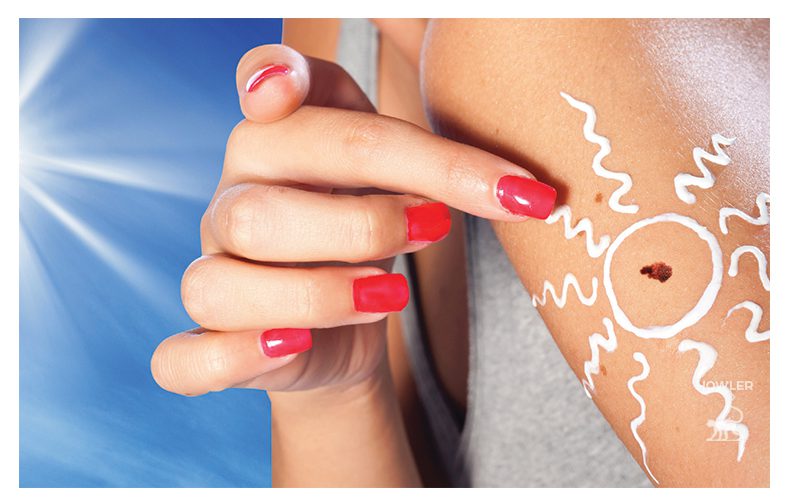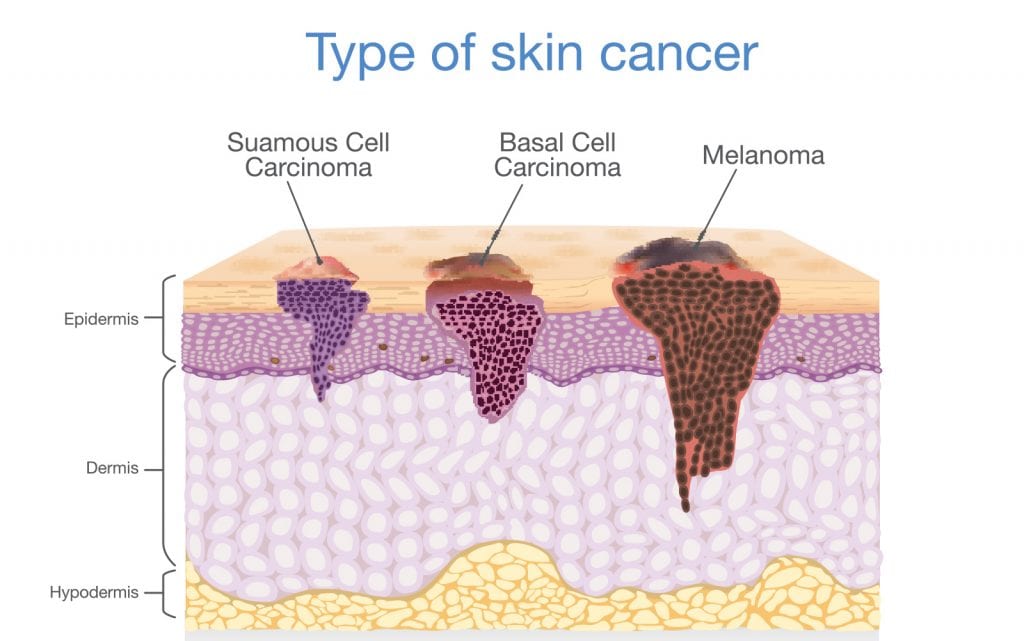The Doctor Is In: The Sun and Your Skin. Protect and Detect Skin Cancer. Prolonged exposure to the sun’s ultraviolet (UV) rays causes the skin to age prematurely and can lead to skin cancer.
When UV rays penetrate the outer layer of skin and reach the delicate inner layers, the elastic fibers that give skin its firm shape and texture can break down as a result. This damage can interfere with the growth of new skin cells, causing the skin to become thin, sag and form wrinkles.
Skin cancer is the
uncontrolled growth of abnormal cells.
Because the sun also weakens the ability of the skin’s outer layer to retain moisture, overexposed skin becomes dry and leathery.
Skin cancer is the uncontrolled growth of abnormal cells. There are three main types: basal cell, squamous cell and malignant melanoma.
Basal cell carcinoma is by far the most common and also the least life-threatening, rarely spreading to other parts of the body. Squamous cell carcinoma is more likely to spread locally. Both of these types of cancer start in the outer layer of skin and usually affect only a limited area. However, if not caught early and treated, their surgical treatment could be disfiguring.
Signs of basal and squamous cell cancers include:
- a growth that appears pearly, translucent, tan, brown, black or multicolored
- a spot that itches continuously, hurts, erodes, bleeds, or forms a crust
- an open sore that fails to heal within a few weeks
- a smooth growth with raised borders and an indentation in the center
- a white, yellow, or waxy scar-like area that may have irregular borders
Malignant melanoma is the most lethal type of skin cancer. It affects the skin’s darker pigmented cells, the same type of cells found in moles. If melanoma is not detected and treated promptly, it can quickly spread to other parts of the body, attacking vital organs and resulting in death.
Symptoms of malignant melanoma involve a new or existing mole that:
- undergoes any change in size or thickness
- changes in color, shape or texture and/or has an irregular border
- itches, hurts, bruises, crusts, erodes or bleeds
Keep in mind that everyone has moles and the majority are not cancerous. However, it is still important to have them checked frequently. If you notice one or more of the warning signs mentioned above, see your doctor immediately. Early detection of skin cancer is the best guarantee of a complete cure.
Unfortunately, the number of people developing skin cancer has soared in recent years. Reasons for this include deep tanning, the growing popularity of outdoor sports that promote long-term exposure to the sun and depletion on the earth’s ozone layer. Chemicals released from aerosols, cleaning solutions, automobile exhausts and other pollutants are destroying this protective layer exposing the earth — and your skin — to more direct UV radiation.
The risk of developing skin cancer increases in fair-skinned blondes and redheads. Other risks include a history of severe sunburn, the presence of large moles on the body, and a family history of skin cancer.







